Lessons from 2012 Maine-NH Hunt
Don’t know if we’ve fully recovered yet from our not-quite-a-week of hunting Maine and New Hampshire for ruffies and woodies. We all actually bailed 2 days early, having put in 5 consecutive days instead of our usual 7. Felt like wimps about it, but hey, we were BEAT…from 5 days of the most brutal hunting we’ve ever done.
Either that or we’re feeling our mortality in new ways….
We’ve hunted in the pouring rain, snow and ice for multiple days. We’ve hunted for 7-8 days in a row. So how were we forks-stuck-in-us done after just 5 days of pretty mild weather this time?
Terrain and preparedness.
Re: terrain, we’ve never hunted so many alders in our lives. Think we now agree that is the toughest stuff – the over/under, over/under walking for 5-8 miles a day is just…tough. No two ways about it.
Re: preparedness, we absolutely nailed where the birds were. By “we,” I mean Brendan. That’s his ramp-up to the season, analyzing what we’d done before and where we’d done it, and trying to “expand on that pattern,” as they say in fishing. Well, we for sure did it this time.
We saw more birds the first day – hunting new covers in the Rangeley area – than we’d seen the entire week or any entire week before. Crazy!
The shooting…wasn’t so hot. It’s like we were dazed by all the flushes.
You know how you can remember every flush? Well, by the end of day 1 we were forgetting some. That’s how nuts it was.
We were like a bunch of bird dogs running around out there, excited, and by the time we found bird after bird after bird at multiple new spots on day 1, we weren’t sure if we still had legs or not. Couldn’t feel ’em!
With that preamble, here are some of the lessons learned this year birdin’:
1. Water is key.
When we write another grouse book, instead of “gravel” being the No. 1 factor for finding birds as it is in Serious Grouse Hunting Book 1 (now on 33% off sale for a limited time here), we’re going to change it to water. No matter how wet or dry the year, if it isn’t wet nearby, you won’t find birds.
That’s birds plural.
We’re not interested in a random, roadside bird here or there. We want to find covers with multiple birds in each. For sure they’re there, just takes some digging.
Seemed like Maine was dry this year, NH maybe not so much, and water was key. Didn’t have to be a lot of water, but did have to be moist.
2. Terrain key this time.
Usually we’re focused on trees. What species, what size, what mix, along with other factors like water and access to gravel.
This time Brendan focused more on terrain, notably slope. After finding a constant in the crazy-good covers we got on last year, he wanted to try to replicate that this year. Worked!
Also didn’t matter if we were in Maine or NH – worked in both states.
3. Get off the roads.
Maine had a lot of birds this year, but folks hunting near roads were complaining about not finding many. So:
> You have to get off the roads in the right stuff to get on the pods o’ birds.
Further proof: NH had a lot of birds too if you found the right stuff.
4. Listen to the birds.
A couple days it got HOT, like in the 60s. The leaves were dry and crunchy, and the birds weren’t where they “should’ve” been.
We found them elsewhere, in non-intuitive cover, and finally got it through our thick heads to start hunting those areas…but only because we’d been stumped by that before.
In other words, if you’re finding birds where they “shouldn’t be,” hunt there.
5. A dog helped but….
Usually we’re out there dogless because Brendan isn’t hauling his Lab up from NC and I haven’t gotten my Lab yet (hopefully this week from Whistling Wings Kennel). This year, however, Dave – a pheasant/quail guy but grouse hunting newbie – brought his Lab.
She worked great. Kept close, worked in front of all 4 guys tromping through the slop. She also got better each day, and definitely helped us find a downed bird or two.
Was it fun having her there and in camp? Absolutely. Would we have found just as many birds without her? Yep. Maybe not 100%, but 99%, simply because we were on the birds.
In other words, dogs aren’t magic – they can’t conjure birds out of thin air. You have to put them where the birds are. But they do help, especially when it comes to finding hit birds. That’s a huge help.
6. More birds = tougher shooting?
Not sure about this yet because this amount of birds – about 170 flushes in those 5 days – is new to us. But we thought back about the many times when we’d get fewer than 5 flushes per day: our shot percentages were better. Why?
We think because we were more focused…or we’re not sure how to otherwise explain it. In other words, when you have multiple birds getting up or you “know” you’ll see another one in 20 yards, maybe you’re not as focused.
One time 8 birds got up one after another in front of Brendan. He got his gun up, and as he was yelling “Bird, bird, bird!” etc., couldn’t get on any one bird. Crazy stuff!
Bottom line: no excuses. We’re tearing up the skeet field before next season. Or maybe now!
Food Not Important?
Someone once said grouse are the trash cans of the forest – they’ll eat anything. And they will.
We heard from folks that the grouse were in this or that cover type eating this or that particular food – and they were.
But they were also elsewhere, and were concentrated in other areas.
Our conclusion? At that time of year, food wasn’t important. We did find that a bunch of birds were eating what was either miterwort or false miterwort (we can’t tell the difference), but what did that tell us? Nothing except that we were finding birds in the same moist habitat where it grows.
In other words, it was where, not what.
Other
> We decided that after this year, every couple-three days we’re going fishing…maybe.
Category: 2012-13 reports, Hunt reports, ME, NH, Ruffed Grouse, SBH, Woodcock

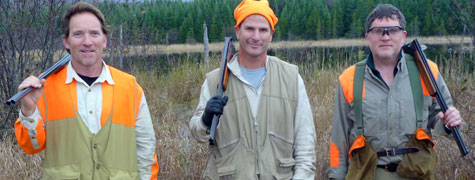
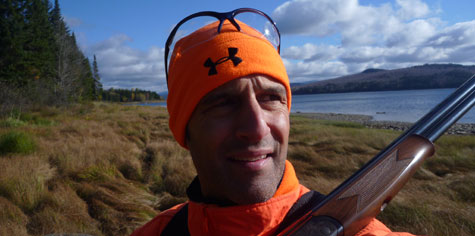
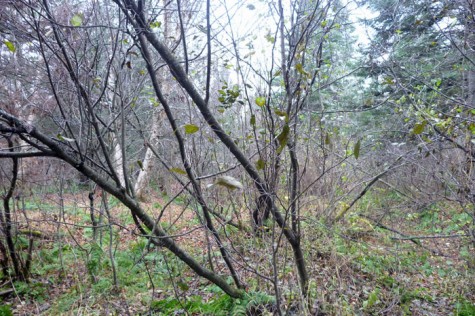
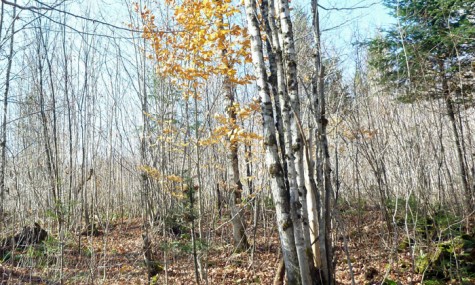
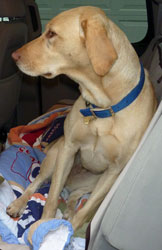
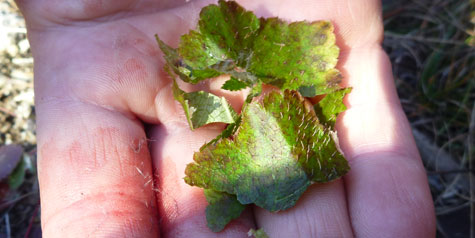




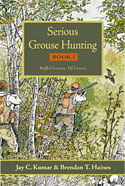

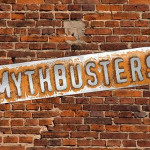
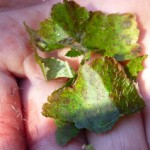
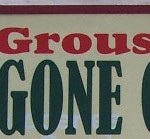
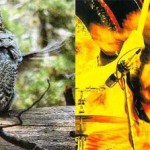
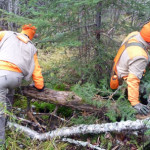
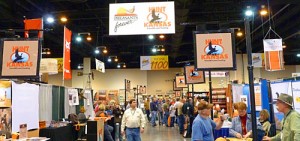
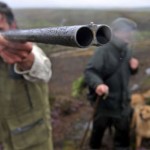
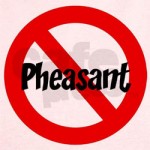
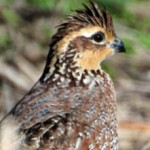
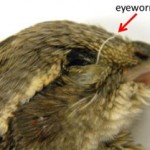
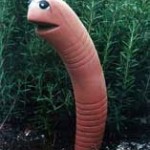
5 straight days of tromping in the cover? Sounds like an exhausting dream come true!
Sounds like you boys had a great time. The partridge population in Maine this year has been better than I have ever seen it. Most birds we have shot were found by stopping and listening to hear them walking in the leaves. I also agree with you about water- it is very important in finding a group of birds.
Best of luck in the future!
Thanks for the new post…good to see and very informative. Not by the roads? Funny, I just got back from my 4th trip to N Michigan-Gaylord area-and hit a pattern where I was flushing a good amount of “pats” just off the access roads. I was busting heavy brush way back in on swamp edges, etc. with very little action when I hit on the road pattern.
Funny, with grouse its always something new. The most important attribute is to keep learning and keep an open mind.
Sounds like you guys got “bird drunk” with so many flushes. Why not just knock off early some days to extend the trip rather than leaving early? If I hunted 8 hours for even three days I’d be in traction…
I hid up in northern New England and hunted for 15 days straight, and I’ll admit there were a couple of days I only hunted a few hours though due to tired dogs (three-four at times), tired legs, and wet weather. Friends funneled through the camp, and about half the time I hunted alone with my three dogs.
It was a great year, well ahead of the ten year average withe birds/hour. My shooting was average, abundance didn’t make practice improve my shooting. It seemed like birds where everywhere that water and shelter were nearby. Most streams provide enough gravel, so proximity to roads isn’t a necessity. I think the mild dry spring helped brood survival. Let’s hope for another next year.
And my whole life more or less revolves around chasing grouse, so I walk a couple of miles daily, trying to keep the legs in shape and the dogs too. Out behind the house the low-bush blueberries grow almost waist high, and I like to push through that just to keep my legs in shape. I wish I had some mountains near home.
Welcome to the alders! Wouldn’t you equate it to trying to raise your shotgun after a large net has been dropped on you? I bet your shins will remember the trip for a while too.
In the ME & NH GNW, dry summer means fewer sedge/seed bearing plants in the uplands, drives Grouse to lowlands and bottoms, concentrated there, so you see more – easier hunting. Roosting cover is everywhere: slashing from logging operations pushed into the bottoms and adjacent conifers everywhere. Wetter summer means sedge and seed bearing plants grow all over the uplands, near wet swales, seeps, and over glacier-scalloped ledge that pools water just under the forest floor (even high up on side-hills), so Grouse are much more dispersed. Don’t look for one rule that works all the time as it doesn’t exist; adapt, like the Grouse GNW is different than than southern New England rolling hills over sand/gravel/clay that drain well. There, look for small brooks and drainage with conifer (if there is any at all) or dense larch and berry thickets roosting cover nearby. Bump, Darrow, Edminster & Crissey wrote the bible on Grouse, but even that tome doesn’t give much information about Grouse in the GNW. Good hunting to all.
Great post. But, there are so many things that I have a different perspective on, I felt compelled to comply.
First, a little background.
I hunt in northern Wis and Upper Michigan. Sept 15.-Jan 31. Most weekends and several 4 day hunts with 4-5 hunters.
Always dogs. Some pointers, some flushers.
I am blessed in that my cabin is adjacent to a 1000 acre Nature Conservancy property and the 1 million acre Ottawa National Forest in Upper Michigan. I can literally walk out my door to both. I also hunt a short drive away in spots I have located in the ONF.
I have been hunting grouse for 20 years. 10 without dogs and 10 with.
We hunt areas where we never encounter another hunter. I mean never when we are in the woods-ever. Unpressured birds always. The spots are at least 1/2 mile from any public road. In the case of hunting near my cabin, the spots are 7-8 miles from any public roads.
I key on aspen cuts pretty much exclusively. But not just any cut. It has to be 10-20 years old with hardwood, conifer, tag alder, ironwood (the no.2 food preference by grouse behind aspen) or cedar on the edges.
Terrain is important in that grouse like to be in the sun and hill sides therefore are where they will be depending on time of day.
Soil is important as better soil means better aspen and better understory.
Understory is important , especially hazelbroom and ferns that survive the early frosts. Berries are ok, but most are gone by fall.
You have to know how to hunt an aspen cut. Luckily, Northwind Enterprises (on the internet), has maps showing all aspen cuts in our area-I think your area too. They have these on an SD card that goes in my Garmin and overlays the topo display. Now I can locate and hunt the exact edge of the cut with ease. I can hunt the downhill portion going up (grouse prefer to fly downhill so hunting them uphell causes them to hold and second flushes are closer since they have to fly uphill).
Without the cut on the GPS you are hunting blind.
While we often hunt near or adjacent to logging roads, we don’t just hunt down the road, except just after feeding time early in the day and later in the day. Then they will be near the roads picking gravel.
With that back ground, here are my observations.
1. You need a dog. Sure, you can hunt without one. I have many times. But, you are kidding yourself if you think your hunts are as productive and enjoyable as a hunt with a dog. You miss birds-a lot-without the dog. You just don’t know it. I keep records of flushes. Guys with dogs on my hunts get twice as many shots on grouse than those without. Also, , you get better shots because you know a bird is there. I get a warning, whether in the form of a point or a birdy tail. You do not without a dog.
2. We have a lot more grouse here than you do in Maine. A peak year is 60+ flushes per day. This year was 35+ per day. It is the second year down on the cycle. We get limits several times a year. That’s 5 grouse per person. The Loyal order of Dedicated Grouse Hunter’s (check out their newsletter), has been keeping records for 30 years-all states with grouse. Shot’s on grouse flushes occur about 1/3 of the time. Grouse are killed on about 1/3 of those shots. If you have a pointer and are a good shot, killing half of those shot at is attainable.
3. Water is not a location key of any particular importance. We have a lot of it here with lakes and streams everywhere, but water per se is not something that holds birds like other cover does. Sure, if it is hot or you have a drought, I will find grouse in damper, cooler areas because that’s where the green is. But water is not a reliable location indicator. Gravel always is a location indicator. But only after they feed. They pick gravel to digest their food.
4. Tag alder is a sort of location key, but not one of overiding importance. I like tags when they are adjacent to aspen as they are an escape cover. Before dispersal in October, I like tags because hens often raise their broods in tags (not their first choice though) and you can find a brood in the tags in early season. Also, in winter, when the green is gone, they like the tag catkins sometimes, although tag catkins are tannic so they are not a primary food choice like aspen, ironwood, hazelbroom and even maple buds.
5.If you can find ironwood, there will be grouse around them until the ironwood seeds are gone.
6.I hunt sloooow. Way slow. I hunt quiet. Let the dog find the bird and pin it without hearing you. Then you have time to prepare and flush the grouse. Sure, I get wild flushes, but I hunt so slow and quiet, they are often nearby. Plus, if you hunt way slow you can always be prepared to shoot AND when you stop, which is every minute or so, you stop where you can have some type of swing. That’s when the wild flush occurs.
7. Mature male birds always hear you coming and are running before you arrive. Not always true with the dog. The dog can get nearer to them. The young of the year are stupid. Those are the grouse you get in groups early on before dispersal and even after. Around dispersal time, you find the young grouse almost anywhere. Tags would not be suprising then because the adult males don’t let them into the good cover. Yes, grouse are very territorial.
8. I have never had only 5 flushes during a 4 hour hunt. Never. We just have more grouse. 5 flushes would mean I failed in selecting good habitat.
9. Food is sooo important. Yes, grouse eat anything. But they prefer some things over others. Wild strawberry and clover are obvious examples. Also, they eat green as long as they can. If there is still green (frost has not killed everything) they will be eating green. Undoubtedly, during a drought, that means hunt near water because that is where the preferred green is. The frost is great because it narrows the green plants. Some ferns are the last frost survivors. I always find grouse on the ferns in late season.
10. Follow the sun, especially if it is cold. The hillside facing the sun on a cold day is where the grouse will be. They must conserve energy to survive the winter.
11. Late season, when the green is gone, concentrates the grouse around the few remaining food sources. Aspen buds and catkins. Maple buds. Hazelbroom. Tag catkins. But, since there are no leaves, the food source needs to be very close to cover. That means thick conifers, cedars, whatever.
If you want to hunt the upper midwest, shoot me an e mail and I will find a weekend for you. My cabin sleeps 8 and accommodations are on me.
Tim Nettesheim tnet@reinhartlaw.com
Tim, this is one of the best posts I have ever seen on Grouse hunting and found it to be very informative. Most of my Grouse hunting was near Fort McMurray in Northern Alberta. I now live in Calgary and hunt in the Foothills west of the City. Your very lucky to have such wonderful hunting where you are. Enjoy. One of these days I will get to hunt in your neck of the woods.
Great report.
I’ve come to the same conclusion over the past year or so – i.e., water is a necessary ingredient in finding numbers of birds. Alders are my new favorite cover. I agree with the sentiment that type of food is less of factor …
For the truly committed, the best hunting is upon us – if you haven’t gone after winter birds, you’re missing out on terrific hunting. Ideal conditions are up to 10 inches of snow. It’s a different deal than the fall w/ birds holding in crazy spots. Under the snow, in open hardwoods, in alder swamps, in mature aspen trees eating buds. Last winter, we found birds in a field in 10 inch grass! They were a good 30-50 from edge of the woods. We flushed them out of this stuff on multiple days – No BS here — if I hadn’t seen it myself I wouldn’t ever have believed it.
If you love to hunt grouse and particularly, like the surprises they throw at you, try the late season!
Tim makes excellent points, most of which I agree with. I typically walk 8-16 mi/day for early fall hunts in northern Wisconsin. I prefer to hunt “fast” with a good dog & slow down only when he gets birdy. Without a good dog, I would flush a fraction of the birds & be lucky to cover 1/2 the territory.